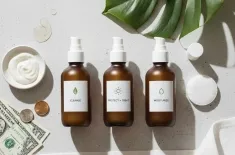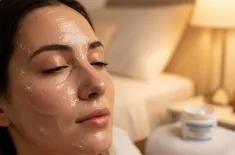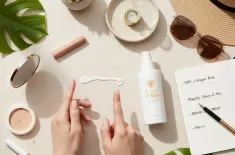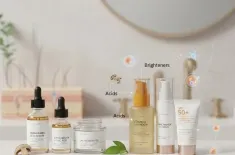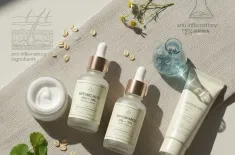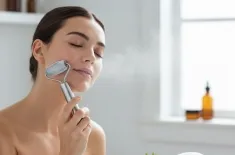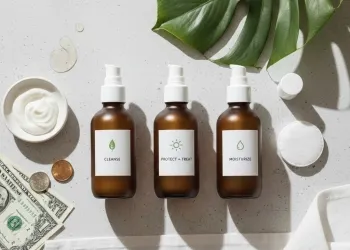Find high-performance drugstore dupes for luxury serums and creams
The world of skincare is often presented as a luxurious, high-stakes investment. Glossy magazines and beautifully packaged jars promise eternal youth and flawless complexions, often with a price tag that causes genuine sticker shock. For years, the prevailing wisdom suggested that effectiveness was directly proportional to cost—the more you paid, the better the results. Thankfully, that era is over. A budget-friendly beauty revolution is sweeping the industry, proving that glowing, healthy skin is accessible to everyone, regardless of their financial constraints.
The truth is, many high-end and luxury skincare products rely on the same core, scientifically proven active ingredient comparison as their counterparts found on drugstore skincare shelves. The difference often comes down to marketing, elaborate packaging, patented complexes that may not dramatically outperform their generic forms, and the overall "experience." This deep dive will explore how to be a savvy consumer, guiding you on where to save vs splurge and providing a direct comparison of high-performance, affordable alternatives that act as powerful dupes for luxury brands.
Understanding the Skincare Splurge: What Are You Really Paying For?
Before we jump into the alternatives, it’s crucial to understand why some products command such exorbitant prices. When you buy a $200 serum, you're rarely paying for $200 worth of ingredients.
- Marketing & Packaging: A significant portion of the cost covers extravagant advertising campaigns, celebrity endorsements, and heavy, aesthetically pleasing packaging.
- "Proprietary" Blends: Luxury brands often include unique, trademarked complexes. While these can be effective, they are sometimes just a blend of common ingredients rebranded with a sophisticated name.
- Texture & Experience: High-end formulations often focus on a luxurious texture, scent, and feel—the whole sensory experience. This fine-tuning adds to the development and manufacturing costs.
- Sourcing & Purity: In some rare cases, a brand may source a premium, highly-pure, or specialized form of an ingredient, which can legitimately increase the price.
However, the skin only recognizes the chemical compound, not the brand name. A molecule of pure Hyaluronic Acid from a budget-friendly beauty brand performs the same function on your skin as a molecule from a multi-hundred-dollar brand. By focusing on the active ingredient comparison, we can bypass the marketing fluff and achieve incredible results for less.
The Core Active Ingredient Comparison: Where to Save
The foundation of any effective routine lies in proven, potent active ingredients. These are the workhorses that deliver visible change—treating acne, fading dark spots, fighting wrinkles, and hydrating the skin. When shopping for these essentials, the drugstore skincare aisle is your secret weapon.
| Active Ingredient | Primary Skin Benefit | Save (Budget-Friendly Option) | Splurge (Luxury/High-End Option) | Save vs Splurge Rationale |
|---|---|---|---|---|
| Hyaluronic Acid (HA) | Deep hydration, plumping | The Ordinary Hyaluronic Acid 2% B5 | SkinCeuticals Hydrating B5 Gel | HA is a large molecule and is often equally effective regardless of price. Focus on multi-molecular weights for deeper penetration, found in many affordable formulas. |
| Vitamin C (L-Ascorbic Acid) | Brightening, antioxidant protection | Geek & Gorgeous C-Glow (Pure 15% L-AA) | SkinCeuticals C E Ferulic | The key is stabilization. While the splurge option has superior, patented stabilization, dupes for luxury brands are now using pure L-AA, Ferulic Acid, and Vitamin E at a fraction of the cost. |
| Niacinamide (Vitamin B3) | Pore-minimizing, barrier repair | The Inkey List Niacinamide Serum | Paula's Choice 10% Niacinamide Booster | This ingredient is inexpensive and stable. Most brands use a 10% concentration, so you can easily save here without compromising potency. |
| Retinoids (Retinol/Retinal) | Anti-aging, cellular turnover | CeraVe Resurfacing Retinol Serum | Shani Darden Retinol Reform | The goal is an effective delivery system. Many drugstore skincare brands use encapsulated or stabilized retinol that minimizes irritation and delivers results just as well as more expensive serums. |
| Salicylic Acid (BHA) | Acne treatment, pore exfoliation | Paula's Choice 2% BHA Liquid Exfoliant (Mid-range save) | Dr. Dennis Gross Alpha Beta Universal Daily Peel | Look for a 2% concentration. The difference often lies in delivery format (pads vs. liquid), but the active ingredient is identical. |
| Ceramides | Barrier repair, moisture lock | CeraVe Moisturizing Cream | Dr. Jart Ceramidin Cream | Ceramides are widely used by budget-friendly beauty brands like CeraVe, often in combination with Hyaluronic Acid and Glycerin, providing a powerhouse for a low price. |
| Glycolic Acid (AHA) | Exfoliation, texture improvement | The Ordinary Glycolic Acid 7% Toning Solution | Alpha-H Liquid Gold with 5% Glycolic Acid | Glycolic acid's effectiveness is tied to its concentration and pH level. Affordable options deliver the same potent exfoliation. |
The Ultimate Skincare Dupe Comparison List
This list provides direct, high-performance dupes for luxury brands, allowing you to make smart choices in your routine and truly save vs splurge.
Hydrating & Moisturizing Face Cream
| Luxury Splurge | Active Ingredient Focus | Affordable Alternative Dupe | Price Difference |
|---|---|---|---|
| La Mer Crème de la Mer (Approx. $380/60ml) | Petrolatum, Mineral Oil, Glycerin, Algae/Seaweed Extract (Miracle Broth TM) | Nivea Crème (Made in Germany) (Approx. $10/150ml) | Over $370 |
| Why it's a Dupe: The Nivea formulation, particularly the German-made version, shares a remarkably similar base structure of petrolatum, mineral oil, and glycerin with La Mer, making it an excellent occlusive for dry skin. While La Mer’s “Miracle Broth” is proprietary, the core moisturizing function is achieved by the budget-friendly beauty Nivea. | |||
Advanced Anti-Aging Serum
| Luxury Splurge | Active Ingredient Focus | Affordable Alternative Dupe | Price Difference |
|---|---|---|---|
| Estée Lauder Advanced Night Repair (Approx. $110/30ml) | Bifida Ferment Lysate, Yeast Extracts, Tripeptide-32 | L'Oréal Paris Age Perfect Cell Renewal Midnight Serum (Approx. $44/30ml) | ~ $66 |
| Why it's a Dupe: Both products heavily rely on Ferment Lysate technology (a form of probiotic/yeast extract) to support the skin barrier and repair cycle. The L'Oréal serum positions itself as a direct competitor, offering comparable texture and key rejuvenating ingredients for an impressive save. | |||
Cult-Favorite Glycolic Acid Treatment
| Luxury Splurge | Active Ingredient Focus | Affordable Alternative Dupe | Price Difference |
|---|---|---|---|
| Sunday Riley Good Genes Lactic Acid Treatment (Approx. $85/30ml) | Lactic Acid 5%, Licorice Root | The Ordinary Lactic Acid 10% HA (Approx. $9.50/30ml) | ~ $75 |
| Why it's a Dupe: Lactic acid is the core exfoliating active ingredient comparison. While Sunday Riley has a refined, gentler formulation with botanicals, The Ordinary offers a higher concentration of the key acid for maximum exfoliation, proving that simple, focused drugstore skincare can deliver results. | |||
Physical/Chemical Sunscreen
| Luxury Splurge | Active Ingredient Focus | Affordable Alternative Dupe | Price Difference |
|---|---|---|---|
| Supergoop! Unseen Sunscreen SPF 40 (Approx. $38/50ml) | Homosalate, Octisalate, Octinoxate (Chemical UV filters) | E.L.F. Suntouchable! Invisible Sunscreen SPF 35 (Approx. $14/45ml) | ~ $24 |
| Why it's a Dupe: Both are known for their "invisible," primer-like, velvety texture and non-greasy finish. The E.L.F. product delivers a nearly identical user experience and sun protection at a fraction of the cost, making it a highly sought-after dupes for luxury brands in the SPF category. | |||
Vitamin C Antioxidant Serum
| Luxury Splurge | Active Ingredient Focus | Affordable Alternative Dupe | Price Difference |
|---|---|---|---|
| Ole Henriksen Truth Serum (Approx. $54/30ml) | Sodium Ascorbyl Phosphate, Orange Fruit Extract | Mad Hippie Vitamin C Serum (Approx. $34/30ml) | ~ $20 |
| Why it's a Dupe: Both use highly stabilized, gentler Vitamin C derivatives (Sodium Ascorbyl Phosphate) and a blend of antioxidant-rich plant extracts. While still a mid-range price, Mad Hippie provides a clean, potent formula that performs the brightening and anti-aging functions of the more expensive serum. For a deeper save, look for Ascorbyl Glucoside serums at the drugstore skincare level. | |||
How to Master the "Save vs Splurge" Strategy
Building a smart, effective routine is all about knowing which products warrant the investment and which are safe to buy in the drugstore skincare aisle. This is the art of the save vs splurge method.
Splurge Where it Counts (The Leave-On Actives)
You should allocate more of your budget-friendly beauty budget to products that stay on your skin and contain highly volatile or specialized active ingredient comparison.
- Antioxidant Serums (Vitamin C): Stable, high-concentration Vitamin C (like L-Ascorbic Acid) is difficult and expensive to formulate. A high-end brand may have a patented system that ensures the active ingredient remains potent and effective for the full product lifespan. Splurge: A high-quality Vitamin C serum.
- Specialized Treatments (Peptides/Growth Factors): Complex ingredients like specialized peptides or growth factors are often proprietary and difficult to replicate exactly. If your skin concern is advanced, a splurge here might be justified. Splurge: Advanced peptide or growth factor serums.
- Prescription or Medical-Grade Retinoids: True medical-grade retinoids (like prescription Tretinoin) and high-quality, stabilized retinaldehyde often cost more but deliver the most significant, scientifically proven anti-aging results. Splurge: High-strength, stabilized Retinaldehyde.
Save on the Basics (The Wash-Off & Bulk Products)
Products that are washed off or are composed of common, stable ingredients are excellent candidates for a save.
- Cleansers: A cleanser's job is to clean, and it's on your skin for less than a minute. As long as it's pH-balanced and non-stripping, a cheap drugstore skincare option like Cetaphil or CeraVe is perfectly fine. Save: Cleanser.
- Basic Moisturizers: Unless you have very specific skin needs, a moisturizer's primary function is to hydrate (Glycerin, Hyaluronic Acid) and occlude (Ceramides, Petrolatum, Shea Butter). These ingredients are universally available and inexpensive. Save: Basic Moisturizers and Body Creams.
- Toners/Mists: Most toners are water-based and contain low concentrations of actives. The affordable options often work just as well for hydration and pH balancing. Save: Hydrating Toners and Facial Mists.
- Sunscreen (Mineral/Chemical): While some prefer the texture of luxury sunscreens, effective UVA/UVB protection is regulated by the FDA and is available in excellent, affordable budget-friendly beauty versions that are now elegant in texture. Save: Daily Broad-Spectrum SPF.
Conclusion: Empowering Your Skincare Decisions
The journey to healthy, radiant skin does not require a luxury budget. It requires knowledge, consistency, and a keen eye for an active ingredient comparison. By focusing on the science behind the formulation, recognizing the excellent dupes for luxury brands available in the drugstore skincare aisle, and employing a smart save vs splurge strategy, you can create a high-performance routine that serves both your skin and your wallet.
Remember, the greatest investment you can make is in consistency—using effective products every day, not just buying expensive ones occasionally. The budget-friendly beauty market has never been better, offering potent, stable, and results-driven formulas that truly challenge the dominance of luxury skincare.

